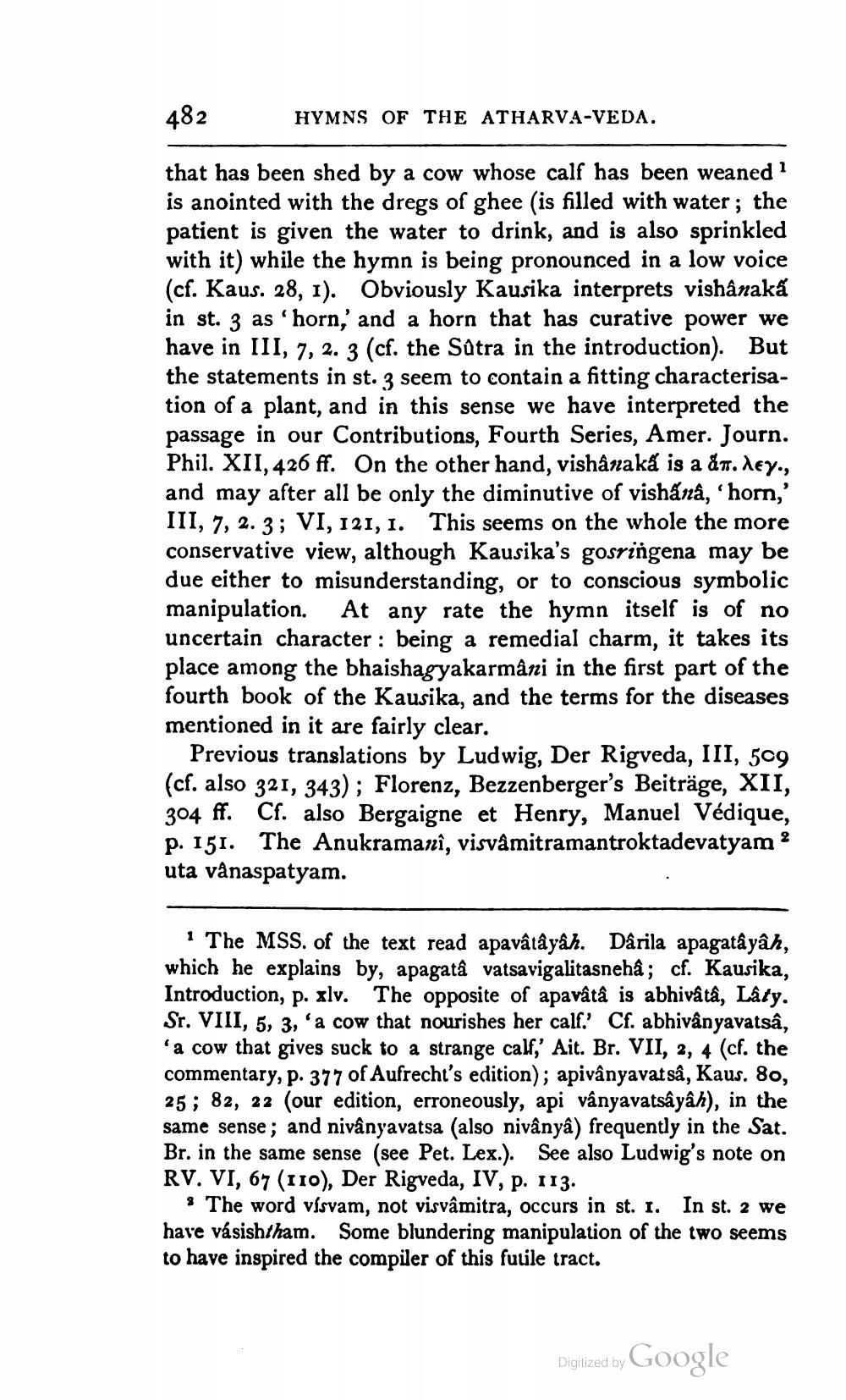________________
482
HYMNS OF THE ATHARVA-VEDA.
that has been shed by a cow whose calf has been weaned ? is anointed with the dregs of ghee (is filled with water; the patient is given the water to drink, and is also sprinkled with it) while the hymn is being pronounced in a low voice (cf. Kaus. 28, 1). Obviously Kausika interprets vishanaka in st. 3 as 'horn,' and a horn that has curative power we have in III, 7, 2. 3 (cf. the Sútra in the introduction). But the statements in st. 3 seem to contain a fitting characterisation of a plant, and in this sense we have interpreted the passage in our Contributions, Fourth Series, Amer. Journ. Phil. XII, 426 ff. On the other hand, vishầnaká is a dn. dey., and may after all be only the diminutive of vishănâ, ‘horn,' III, 7, 2. 3 ; VI, 121, 1. This seems on the whole the more conservative view, although Kausika's gosringena may be due either to misunderstanding, or to conscious symbolic manipulation. At any rate the hymn itself is of no uncertain character : being a remedial charm, it takes its place among the bhaishagyakarmâni in the first part of the fourth book of the Kausika, and the terms for the diseases mentioned in it are fairly clear.
Previous translations by Ludwig, Der Rigveda, III, 509 (cf. also 321, 343); Florenz, Bezzenberger's Beiträge, XII, 304 ff. Cf. also Bergaigne et Henry, Manuel Védique, p. 151. The Anukramani, visvâmitramantroktadevatyam 2 uta vånaspatyam.
The MSS. of the text read apavâtâyâh. Darila apagatâyâh, which he explains by, apagatâ vatsavigalitasnehâ; cf. Kausika, Introduction, p. xlv. The opposite of apavâtâ is abhivata, Lâty. Sr. VIII. 5. 3. 'a cow that nourishes her calf.' Cf. abhivânyavatsa. 'a cow that gives suck to a strange calf, Ait. Br. VII, 2, 4 (cf. the commentary, p. 377 of Aufrecht's edition); apivânyavat sâ, Kaus. 80, 25; 82, 22 (our edition, erroneously, api vânyavatsâyâh), in the same sense; and nivânyavatsa (also nivânya) frequently in the Sat. Br. in the same sense (see Pet. Lex.). See also Ludwig's note on RV. VI, 67 (110), Der Rigveda, IV, p. 113.
s The word vísvam, not visvâmitra, occurs in st. 1. In st. 2 we have vásishtham. Some blundering manipulation of the two seems to have inspired the compiler of this fuuile tract.
Digized by Google




